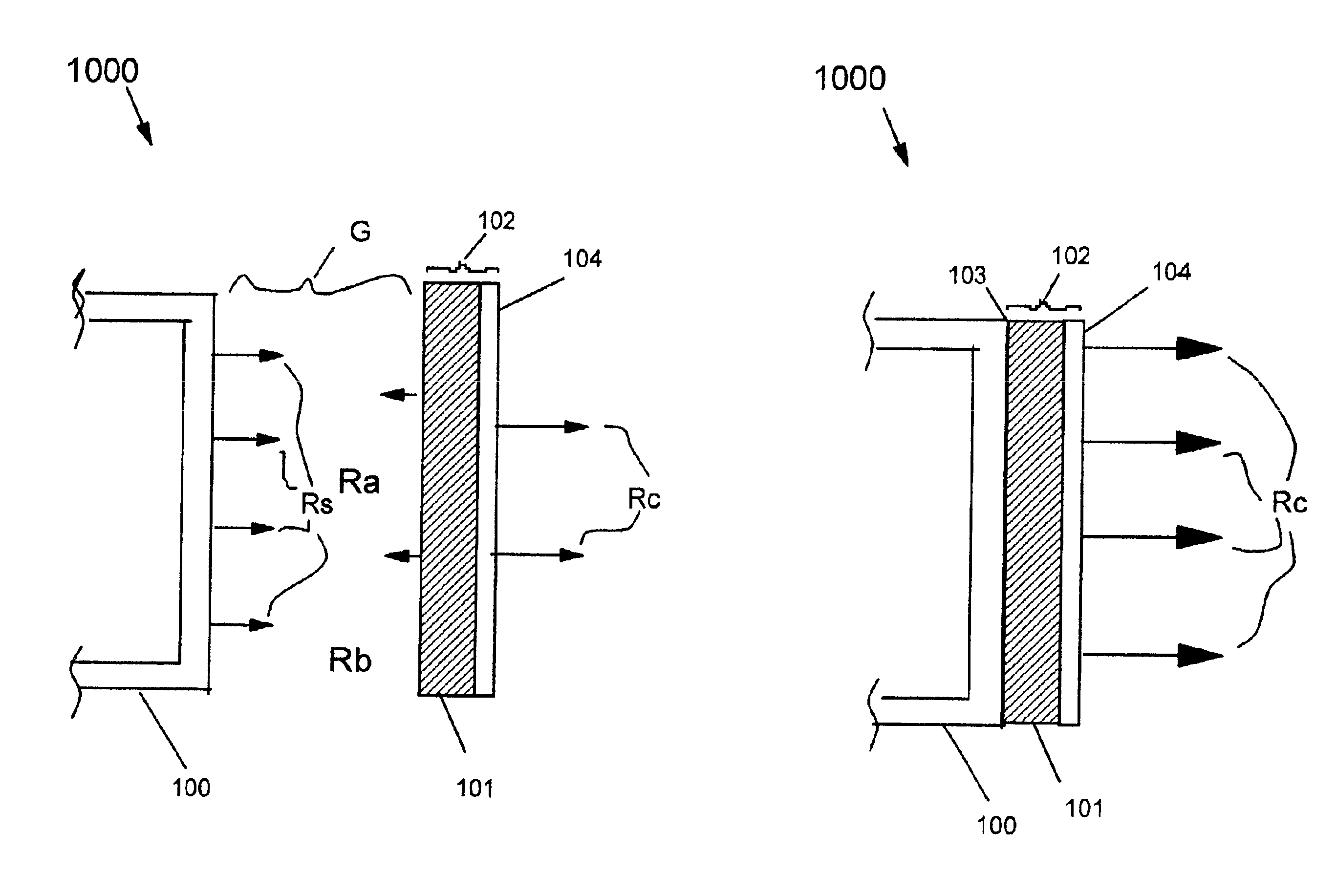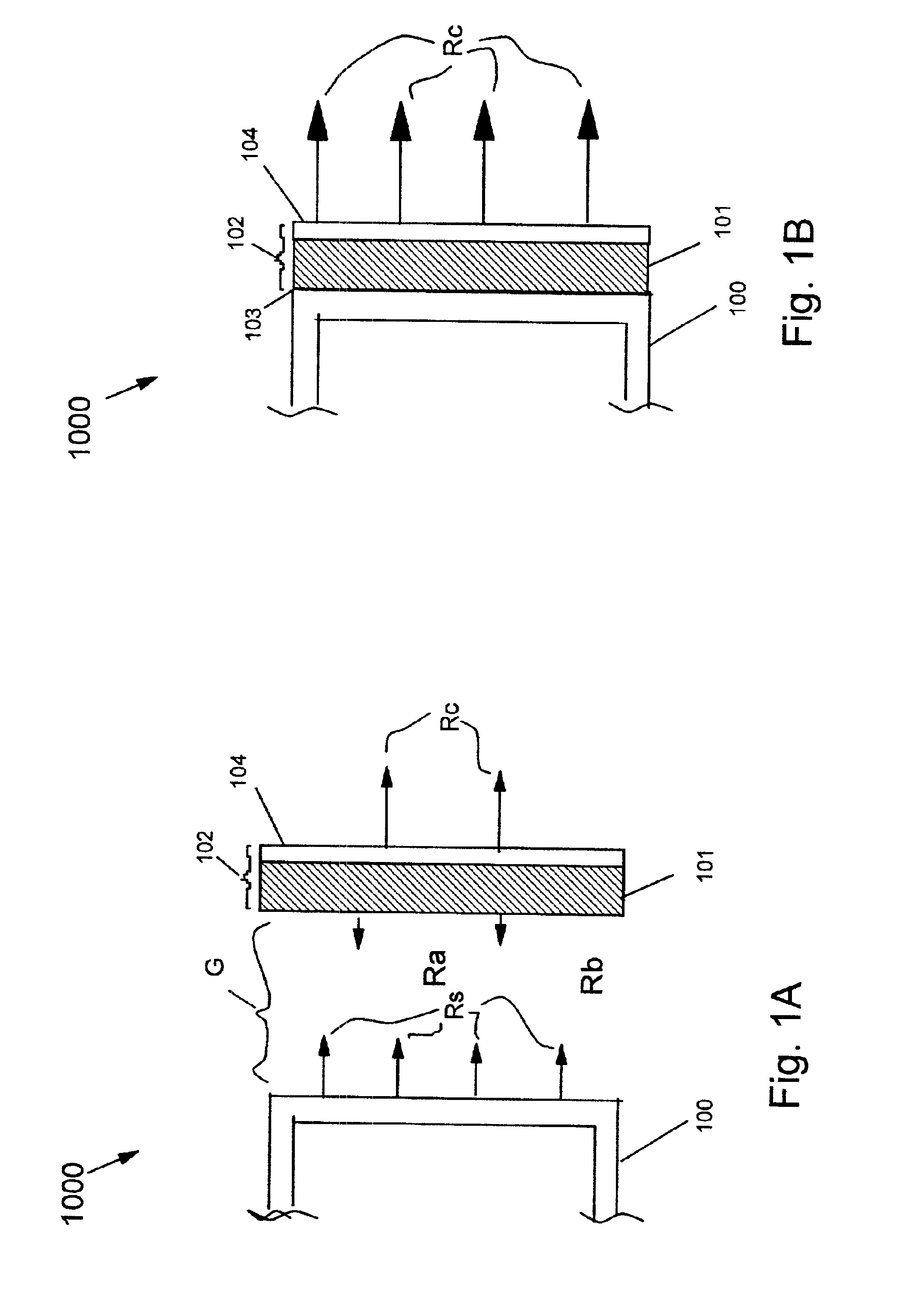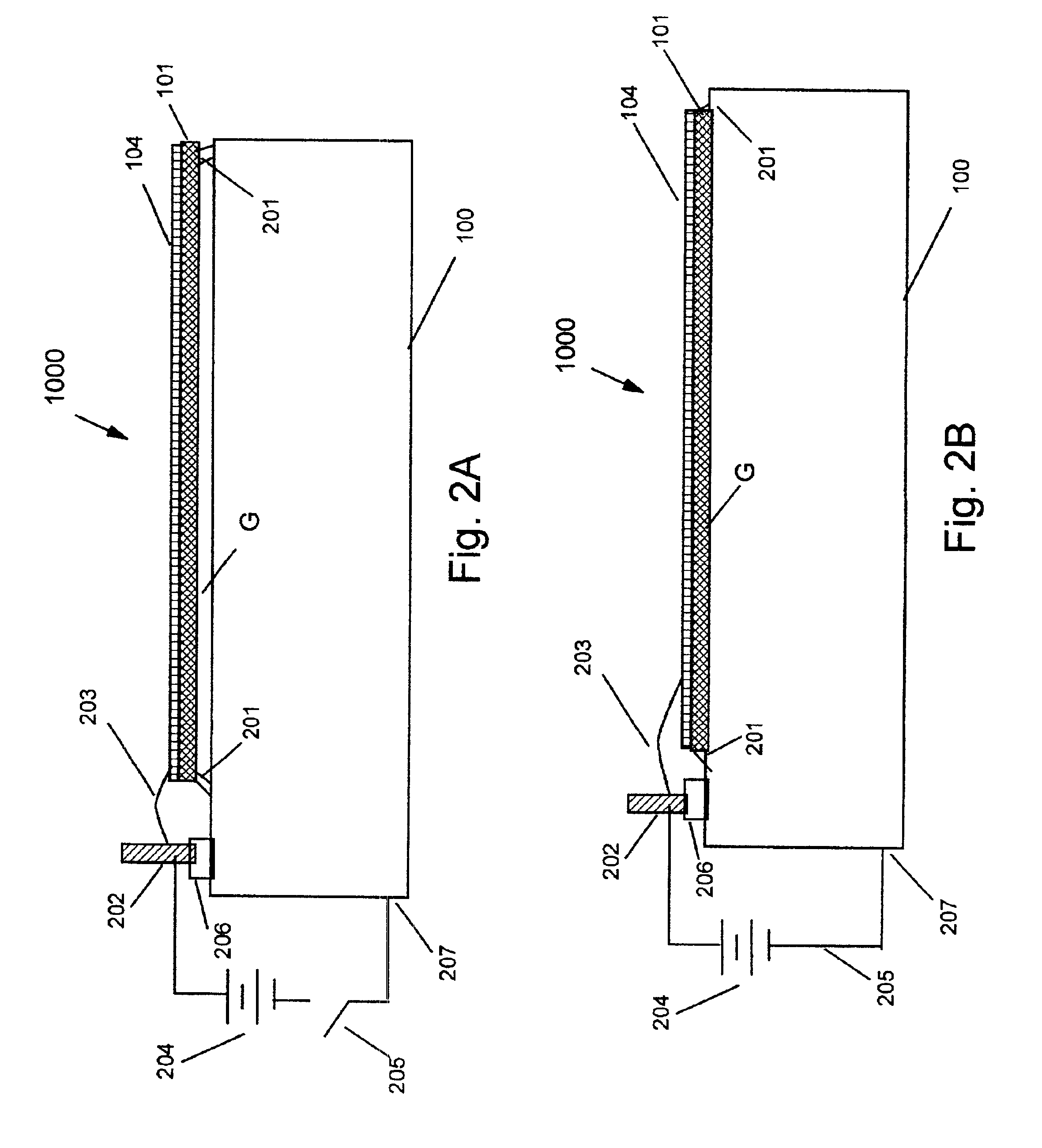Electrostatic switched radiator for space based thermal control
- Summary
- Abstract
- Description
- Claims
- Application Information
AI Technical Summary
Benefits of technology
Problems solved by technology
Method used
Image
Examples
Example
[0028]Before explaining the disclosed embodiment of the present invention in detail, it is to be understood that the invention is not limited in its application to the details of the particular arrangement shown, since the invention is capable of other embodiments. Also, the terminology used herein is for the purpose of description and not of limitation.
DETAILED DESCRIPTION OF DRAWINGS
[0029]FIG. 1A is a depiction of the ESR 1000 in the “OFF” state. The outer skin 100 of a craft radiates heat via radiation Rs. Thermal gap G acts as an insulator. Energy is radiated Rs by the outer skin 100, which has a low surface emissivity. Heat is absorbed by the composite film 102 consisting of the dielectric 101 and the thin metallic surface coat 104. In this “OFF” position, the heat loss from the outer skin 100 is the energy lost from radiation emitted Rs minus the energy absorbed from the reflected radiated energy Ra of the composite film 102 (dielectric 101 and thin metallic surface coat 104) ...
PUM
| Property | Measurement | Unit |
|---|---|---|
| Temperature | aaaaa | aaaaa |
| Flexibility | aaaaa | aaaaa |
| Electric potential / voltage | aaaaa | aaaaa |
Abstract
Description
Claims
Application Information
 Login to View More
Login to View More - R&D
- Intellectual Property
- Life Sciences
- Materials
- Tech Scout
- Unparalleled Data Quality
- Higher Quality Content
- 60% Fewer Hallucinations
Browse by: Latest US Patents, China's latest patents, Technical Efficacy Thesaurus, Application Domain, Technology Topic, Popular Technical Reports.
© 2025 PatSnap. All rights reserved.Legal|Privacy policy|Modern Slavery Act Transparency Statement|Sitemap|About US| Contact US: help@patsnap.com



